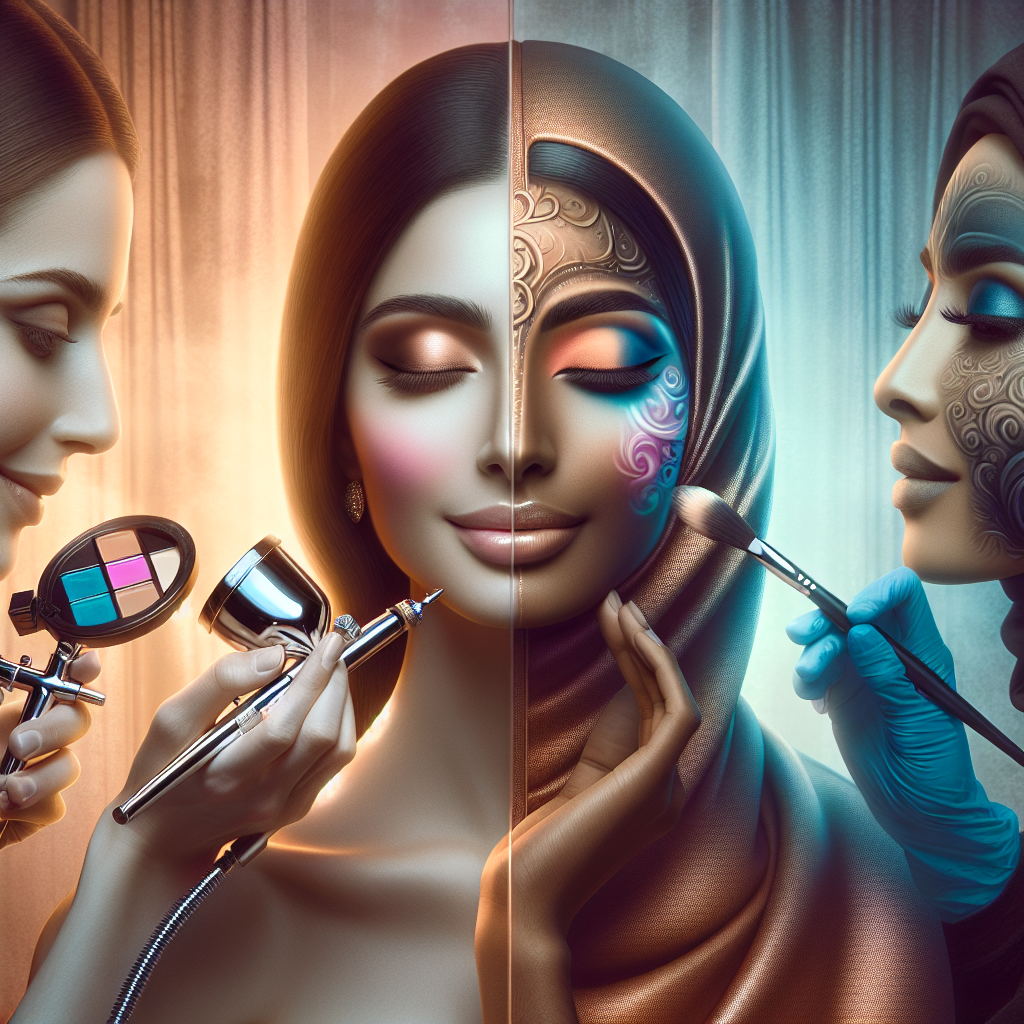Makeup has become an essential tool for self-expression, enhancing natural beauty, and creating stunning looks for various occasions. Two prominent techniques in the beauty industry are airbrush and traditional makeup. Each method has its advocates and distinct advantages, leading to an ongoing debate among professionals. In this article, we’ll explore the differences between airbrush and traditional makeup, what experts prefer, and the reasons behind their choices.
Understanding Airbrush Makeup
Airbrush makeup involves the use of a specialized machine that sprays a fine mist of foundation and other products onto the skin. This technique allows for a very lightweight and natural finish, ensuring an even application. The airbrush method is often used in professional settings, such as film and fashion shoots, due to its durability and ability to withstand various conditions.
The Benefits of Airbrush Makeup
- Flawless Finish: The fine mist creates a seamless look that minimizes the appearance of pores, uneven texture, and imperfections.
- Longevity: Airbrush makeup tends to last longer without the need for touch-ups, making it ideal for long events or shoots.
- Lightweight Feel: Many users find that airbrush makeup feels lighter than traditional products.
- Customizable Coverage: The technique allows for sheer to full coverage depending on the user’s preference.
Exploring Traditional Makeup
Traditional makeup involves the use of a variety of products, including foundations, powders, creams, and liquids, applied manually using brushes, sponges, or fingers. This method has been the standard for decades and is widely used for both casual and professional applications.
The Advantages of Traditional Makeup
- Variety of Products: There is a wider range of traditional products available, allowing for versatility in color, finish, and texture.
- Better Blending Techniques: Experienced makeup artists often prefer traditional makeup for its ease of blending, especially with cream and liquid products.
- Accessibility: Traditional makeup products are generally more accessible and affordable for everyday consumers.
- Hands-On Application: Many artists feel a stronger connection to their work with traditional makeup, allowing for artistic expression through techniques like contouring and strobing.
What Do Experts Prefer?
The preference between airbrush and traditional makeup varies among professionals, depending on the context of use and personal style. For example, makeup artists working in film and photography often lean towards airbrush for its flawless finish and durability. Conversely, bridal makeup artists may choose traditional methods to allow for more detailed and customized looks based on individual skin types and preferences.
Factors Influencing Preference
- Skin Type: Some skin types may react better to certain formulas, leading experts to recommend tailored approaches based on the client’s needs.
- Event Type: The nature of the event—whether it’s a wedding, a photo shoot, or a casual outing—can influence the chosen technique.
- Experience Level: Individual artist skill levels can affect their comfort with either technique.
- Trends: Beauty trends often sway opinions; airbrush makeup has surged in popularity due to its prominence in social media and influencer culture.
Conclusion
Ultimately, both airbrush and traditional makeup have their unique merits. The choice between the two often boils down to personal preferences, skin types, and the demands of specific occasions. Consulting with a professional makeup artist can help individuals determine which technique will best meet their makeup needs and preferences.

